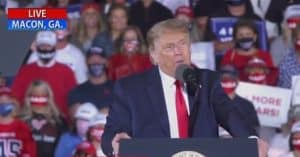Supreme Court refuses to halt California emissions case amid policy changes
In a significant judicial decision, the U.S. Supreme Court has opted not to pause a crucial legal case concerning California's vehicle emissions and electric car standards despite the Trump administration's ongoing policy reviews.
According to USNews.com, The court's move indicates potential legal stability for California's regulatory standards while other cases face pauses due to shifting administrative policies.
The Supreme Court's decision arrives amidst a backdrop of legal and policy alterations by the federal government. The controversy traces back to the Environmental Protection Agency's (EPA) action in 2022 that reinstated California's authority to set its own, more stringent vehicle emissions standards. This decision reversed a previous stance taken during the Trump administration, particularly a 2019 move that rescinded California's waiver, thereby curtailing its regulatory autonomy.
Justices Agree To Hear Arguments
The justices have agreed to hear arguments in the case, yet they have not set a date for these proceedings. In contrast to this decision, the court chose to put on hold a separate issue concerning a Biden-era regulation that assisted students with loan forgiveness if they had been defrauded by educational institutions. The juxtaposition between these two cases highlights the complexities involved as the court navigates differing regulatory legacies left by recent administrations.
While the Supreme Court provided no detailed reasoning, it issued brief orders to articulate its resolve on these issues. Sarah Harris, the acting solicitor general, had filed a motion on January 24 to pause consideration of the case. She pointed out the need for a reassessment of the EPA's position on the 2022 ruling, citing the administrative shifts as a primary reason.
Federal Versus State Regulation
California's legal stance is supported by a provision that allows the state to establish vehicle emissions standards that exceed those mandated federally, conditional on an EPA waiver. This policy enables California to act independently in setting regulations aimed at reducing vehicular pollution. The energy company Valero and other fuel industry groups, however, have contested the decision by lower courts to uphold the 2022 EPA waiver.
These legal disputes underscore broader tensions between federal and state regulatory powers concerning environmental policy. The case's outcome could have significant implications for other states seeking to enact similar environmental protections.
Within this landscape, the Trump administration is expected to reassess its legal strategies in prominent cases that were initially addressed under Biden's tenure. This anticipated shift could realign federal positions with the administration's broader policy goals.
Trump Administration's Potential Policy Shift
This case is among several high-profile cases that may see a revision in legal positions due to the change in administration. Such shifts represent a recalibration of federal priorities, especially in areas related to environmental regulations and states’ rights to autonomy over such matters.
The Supreme Court's refusal to delay the California case contrasts with its decision to pause proceedings related to the student loan forgiveness rule. The latter relates to a regulation established during Biden’s administration designed to provide relief for students who were misled by educational institutions about the quality or status of their programs.
On a related note, the court also denied requests to pause two other cases that are challenging existing Environmental Protection Agency regulations. The reasons for these decisions, much like in the California emissions case, remain unexplained by the court beyond its succinct orders.
Continuing Challenges To EPA Rules
These legal dynamics are playing out against a complex interplay of administrative rulemaking and judicial interpretation. As the court addresses these substantial regulatory questions, the alignment or divergence of federal and state policies remains a central concern.
The legal community, as well as business and environmental stakeholders, are closely watching how these cases will develop. The Supreme Court's future arguments and subsequent decisions could carve out new precedents regarding the limits of state versus federal authority in regulating emissions standards.
Awaiting Further Developments
Observers are keenly anticipating further developments as the Supreme Court moves forward with hearing the case. Indications of how the justices might rule based on previous decisions remain speculative at best.
The ramifications of these ongoing legal battles are poised to affect environmental policy trajectories, not only within California but potentially across the United States. As such, the decisions of the Supreme Court hold considerable weight in shaping future regulatory landscapes and addressing the pressing issues of climate change and environmental stewardship.




